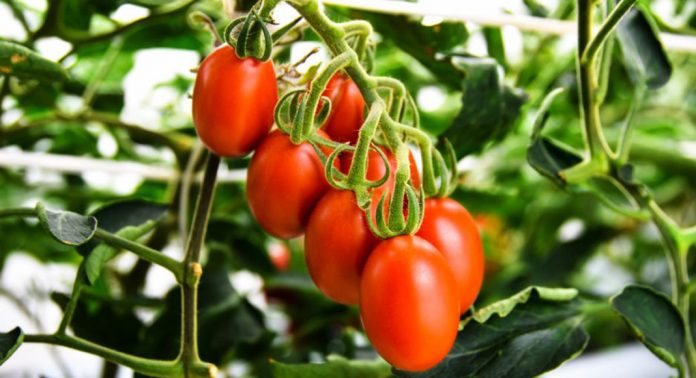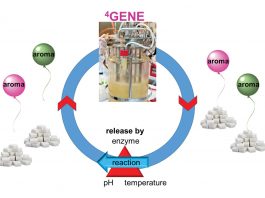T-PIRC’s Professor Kazuo Watanabe explains how the centre is developing both the next generation plants with high function and value and the next generation plant biotechnology.
Tsukuba Plant Innovation Research Center (T-PIRC) focuses on the development of next generation plants with high function and value, and the development of next generation of plant biotechnology, as well as accelerating their social adaptation.
To attain these goals, T-PIRC promotes collaboration among industry, government, and academia to share and concentrate knowledge to conduct seamless R&D toward delivery utilisation by stakeholders as well as towards the creation of start-up S&T-based venture businesses, which spin out from our university.
The University of Tsukuba launched the Tsukuba-Plant Innovation Research Center (T-PIRC) in April, 2017. To address global issues on sustainable food and energy solutions, the centre aims at supporting research and development on food security and eco security, as well as accelerating the process of its industrial applications, working together with domestic and international private and public sector partners.
T-PIRC is composed of a centre (including a Joint Usage/Research Center, as a ‘Plant Transgenic Design Initiative (PTraD)’ appointed by Ministry of Education, Sport, Culture, Science and Technology), four divisions, and two units. By integrating these research units, we have developed a one-stop-shop for plant biotechnology and bioresource use/reuse, covering basic and applied gene research for industrial applications which will contribute to a sustainable society. In addition, the outcome of cutting-edge research activities for industrial applications is expected to contribute to human resource development (for further information, please see the fourth edition of this publication The Innovation Platform).
Originality of research and development
Professor Hiroshi Ezura, the director of T-PIRC, leads the industrial applications of genetic engineering with biotechnology venture business. He supported the first commercialisation case of genome edited crop in Japan, and also led the first case at the global level.
In addition, T-PIRC also assists the private sector with regards to deregulation aspects of plant biotechnology products, such as in environmental risk assessments with a series of cases created by T-PIRC faculty members. Examples include domestic requests for: the tomato, the Phalenopsis orchid, eucalypts, poplars, etc. We also assist in risk assessments regarding the diversity of transgenic plants for academic organisations. Furthermore, we are now working with institutions overseas who wish to apply aspects of our specialist research to their own practices. This includes in Indonesia and Taiwan, where we work to share our experiences under Japanese regulation, and our global experiences with the Cartagena Protocol on Biosafety for Convention on Biological Diversity and OECD.
Global challenges
To further support the promotion and application of plant biotechnology into uses that tackle climate change, we aim to establish our centre as a key global hub for research and development on plant biotechnology and genetic resources for industrial applications.
The UT also has its own international liaison offices overseas and, as a result of decades of collaborations, T-PIRC has key partners all over the world. Indeed, we have joint research and development programmes as well as graduate student empowerment programmes and mutual staff development initiatives.
Representative collaborative partners are:
- The University of Bordeaux and INRAe in France;
- Michigan State University, Cornell University, and the University of Florida in the USA in a collaborative research project led by Professor Kenji Miura, see Figs. 1 and 2;
- Vietnam National University-Agriculture at Hanoi, Biotechnology Center and Agriculture High Technology Park of Ho Chin Minh City, the Institute of Tropical Biology, the Vietnam Academy of Science & Technology, all located in Vietnam;
- UNPAD in Indonesia;
- The Center for Agricultural Biotechnology, Kasetsart University, and CAB’s national consortium on agricultural biotechnology, in Thailand; and
- Taiwan National University.
Through these partnerships, we support Japanese collaborators who wish to conduct research in these institutions. Similarly, foreign researchers are also able to participate in research and/or training opportunities at T-PIRC. For example, work has taken place in the area of environmental biosafety evaluation and the field assessment of the transgenic orchid with Professor Kai-Wun Yeh from National Taiwan University, and we have received AIR confirmation with USDA-APHIS that the unique white Oncidium orchid can be exported to the USA in 2020.
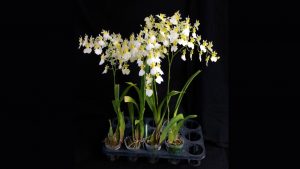
Joint lab operation with institutions based in Bordeaux
Tsukuba-INRA Joint Lab, TIL, was established in 2008 after a long history of collaboration and is now certified as an International Associated Laboratory (LIA) at INRAe co-ordinated by Professor Chiaki Matsukura.
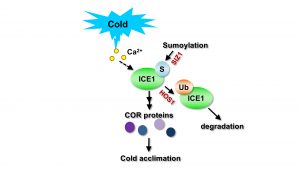
As co-operation progresses, a joint Master’s programme has also been established – Master Biology AgroSciences Bordeaux with INRAe Furthermore, the University of Bordeaux has been included for multi-party co-operation on plant sciences. Faculty members are exchanged and hired mutually via this development.
Shuttle research with the Plant Resilience Institute at MSU, USA
We have also established a formal co-operation agreement with the Plant Resilience Institute at Michigan State University, PRI-MSU, which has been on-going since 2017. Here, emphasis is placed on plant resilience mechanism research with regards to climate change, and steady progress has been made on joint publications.
Student-based research with KU-CAB
With more than four decades of exchanges, UT has a variety of activities with the entire Kasetsart University’s four campuses. T-PIRC has been actively co-operating with KU’s Center for Agricultural Biotechnology on graduate student-based joint training and research and has also been participating in CAB’s network as the COE on agricultural biotechnology with multiple functions on academic co-operation, industry liaison, and neighbouring country empowerment at Cambodia, Laos, and Myanmar. T-PIRC thus jointly co-operates in research, development, and extension. Now, T-PIRC is looking to increase its work in CAB for both biotechnology and genetic resources research as the Thai international co-operation platform for T-PIRC’s Japanese and global partners.
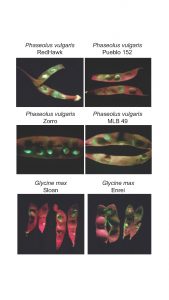
Local operations under new paradigm by international laws
Having an outstanding global alumni, T-PIRC has been able to expand its global operations, especially in ASEAN economies. Examples include UNPAD in Indonesia, UPLB in the Philippines, and several institutions in Vietnam, such as VNU-Agriculture, HCMC Biotechnology Center and ITB.
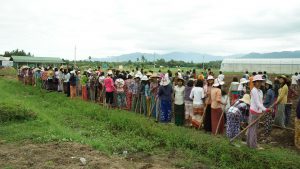
It is not a unilateral effort, but with the local investment from partner programmes, joint research and development has been continued.
T-PIRC is very keen on sharing common managerial standards in aspects of research compliance such as biosafety and ownership issues regarding genetic resources, as well as IPR that meets international legal instruments and their domestic regimes. By continuously sharing these experiences through a series of annual workshops, as well as via graduate education opportunities, local operations are enforced with the global standards of research management alongside compliance with the new legal establishment of corresponding economies.
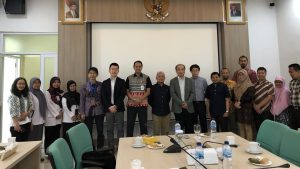
Genetic resources
T-PIRC is the platform for bioresources for plants such as the tomato, as supported by the National BioResource Project of Japan. This compliments global efforts such as the Sol Genomics Network and Tomato Genetic Resources Center. However, by using our own unique materials, we are able to co-operate globally. We also have a series of original genetic resources, such as buckwheat and Japanese domestic Primula spp.. We also maintain a diversity of crop genetic resources such as Zingiberaceae and Cucurbitaceae from overseas, complying the modality under present international paradigms such as FAO IT PGR FA and NP of CBD.
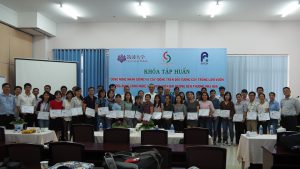
We do not only share our collections for public research and industrial applications; we also co-operate on management aspects with existing bioresources and genebank activities globally, where our expertise is requested on science and technology aspects such as information and materials. T-PIRC has co-operated with INIFAP in Mexico to empower its national genebank from 2012 to 2018 with JST SATREPS’ support, for instance, which now continues as a participatory network DIGEM (Diversidad Genética Mexicana) such as on Sechium edule, Opuntia spp., and other under-promoted crops.
Working closely with the Japanese genebank at the Genetic Resources Center at National Agriculture Research Organization, collection expeditions have been conducted, most notably perhaps with ASEAN nations, with our faculty members using extramural funding. We accommodate junior professionals from partner economies as a part of such expeditions to empower them either with their graduate degree or in terms of short term technical practices, and we receive funding support from our partners as a part of this.
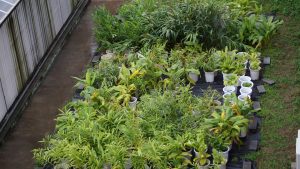
Inviting Global Partnership Networking with T-PIRC
In addition to drawing on the history of the university’s partners, T-PIRC would also like to invite parties to open partnerships. We participate in international activities with PRRI (see https://prri.net/), ISAAA (see: https://www.isaaa.org) and some of International Agricultural Research Centres activities (IARCs), such as the World Vegetable Center (AVRDC) to promote a multilateral network and co-operation in the fields of biotechnology and genetic resources and their application to help meet global needs in terms of sustainability. Under permitted circumstances, we are also trying to find modalities of collaboration with regions that are currently experiencing other difficulties, such as Myanmar and Iran.
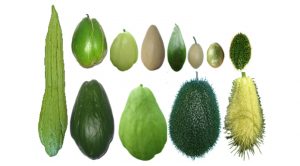
Further developments will be followed by a diversity of different disciplines and the inclusion of things such as automatic greenhouse operations with AI and sustainable energy uses, robotics, and meta data informatics for the agro-industry.
Please note, this article will also appear in the sixth edition of our quarterly publication.

